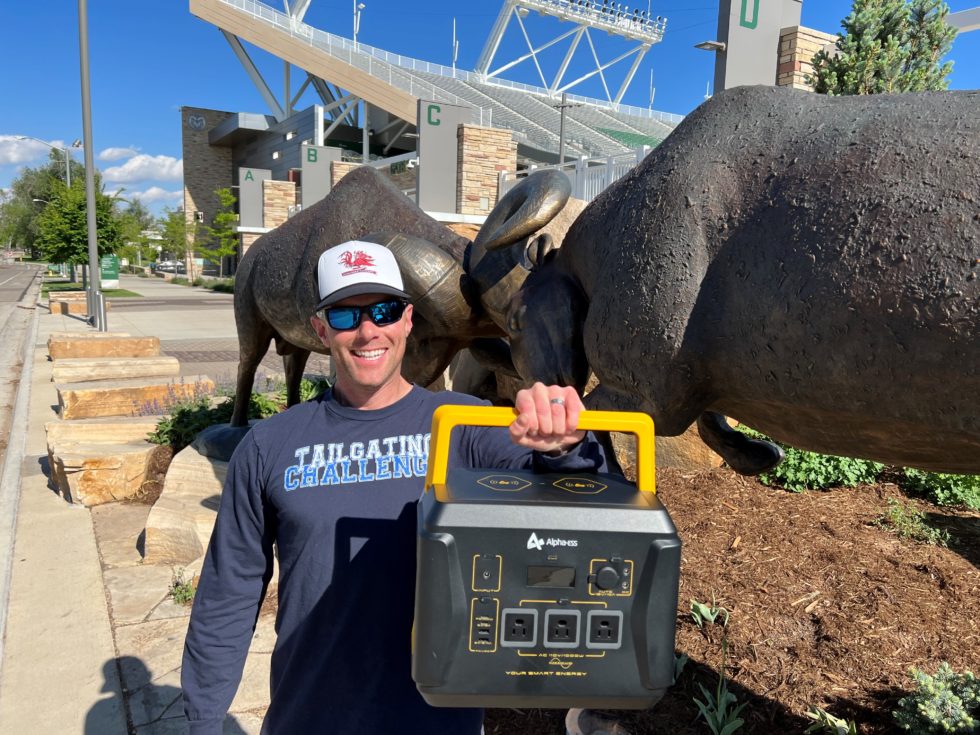Three Best Ways To Recharging A Portable Power Station
Portable power stations are an essential tool for anyone who loves outdoor activities or lives in an area with frequent power outages. They’re flexible and may be used to power everything from mobile gadgets to laptops to even home appliances. Nonetheless, mastering the proper charging procedures is essential for keeping your power plant operational. This simple instruction will teach you the fundamentals of charging a portable power station.
UNDERSTANDING PORTABLE POWER STATIONS
A portable power station is an appliance that can provide electricity everywhere it is plugged in thanks to its built-in battery and several output ports. It can charge a wide range of devices because to its several output ports (usually USB, AC, DC, and even wireless charging).
Solar generators, battery generators, and portable generators are all names for the same thing: a mobile power supply. They range from little models that can be carried in a purse to enormous, bulky ones that can provide electricity for a complete home.
TYPES OF PORTABLE POWER STATIONS
Portable power sources may be either alternating current (AC) or direct current (DC). The vast majority of power plants offer electricity via ordinary AC outlets, much as those found in most homes. Nevertheless, direct current (DC) power stations are used to charge electronic items that utilize DC, such as laptops and cameras, through DC plugs.
CHARGING METHODS FOR PORTABLE POWER STATIONS
Portable power stations can be charged in several ways, including solar panels, a car’s 12V socket, or a wall outlet.
HOW TO CHARGE A PORTABLE POWER STATION WITH SOLAR PANELS
Camping, hiking, and other outdoor adventurers have a great resource in portable power stations that may be charged using solar panels. These are the basic procedures for using solar panels to recharge your portable power supply:
1. Choose the right solar panel: Be sure the solar panel you choose can effectively charge your power station and is compatible with it.
2. Position the solar panel: Put the solar panel where it will get the maximum sunshine, such as a field that faces south.
3. Connect the solar panel to the power station: Install the solar panel by connecting the relevant cable to the input port on the power station.
4. Monitor the charging process: Keep an eye on the charging process to ensure that the power plant is getting the job done.
5. Disconnect the solar panel: Once the power station is fully charged, disconnect the solar panel from the input port.

HOW TO CHARGE A PORTABLE POWER STATION WITH A CAR
Charging a portable power station with a car is a convenient option when you’re on the go and don’t have access to a wall outlet. To charge your power station with a car, follow these steps:
1. Locate the 12V socket: Locate the 12V socket in your car, which is usually located in the dashboard or center console.
2. Connect the power station to the car: Connect the power station to the 12V socket in your car using the appropriate cable.
3. Start the car: Start the car and let it run for a while to charge the power station.
4. Monitor the charging process: Check the power station’s charging status and make sure it is charging correctly
5. Disconnect the power station: Once the power station is fully charged, disconnect it from the 12V socket in your car.
HOW TO CHARGE A PORTABLE POWER STATION WITH A WALL OUTLET
Charging a portable power station with a wall outlet is the most common method and the easiest to use. To charge your power station with a wall outlet, follow these simple steps:
1. Choose the right charger: Make sure you have the right charger for your power station.
2. Connect the charger to the power station: Connect the charger to the input port on your power station using the appropriate cable.
3. Connect the charger to the wall outlet: Plug the charger into a wall outlet.
4. Monitor the charging process: Check the power station’s charging status and make sure it is charging correctly.
5. Disconnect the charger: Once the power station is fully charged, disconnect the charger from the input port and the wall outlet.

TIPS FOR CHARGING A PORTABLE POWER STATION
Here are some tips to keep in mind when charging your portable power station:
1. Always use the right charger for your power station.
2. Check the power station’s charging status and make sure it is charging correctly.
3. Avoid charging the power station in extreme temperatures or direct sunlight.
4. Keep the power station away from water or any other liquid.
5. Do not charge your power station in a closed container or enclosed space.
MAINTENANCE AND SAFETY TIPS FOR PORTABLE POWER STATIONS
Everything discussed thus far is relevant to the autonomous operation of your portable power station. Yet, there are certain basic but vital tips you should follow to optimally maintain your batteries and extend the life of your gadget.
1. The outputs should be turned off when not in use.
Easy enough. Be sure none of the ports on your portable charger are plugged in or turned on before putting it away.
The AlphaESS 1000W portable power station has many switches for different zones, and it must disable all of them. If you want to save money on your electric bill, turn off your portable 1600W power station’s master switch when you’re not using it.
2. Keep in a Cool, Dry Place
As was previously noted, a portable power station’s longevity is significantly affected by its surroundings. The AlphaESS power station is made to survive, but like any electrical item, it should be protected from water.
It has to be kept in a cool, dry, dark place with good air circulation. There will be no musty cellars or unheated storage buildings here. You shouldn’t keep it in the same room as a radiator or stove. The ideal relative humidity for a room is between 35% and 65%.

3. Maintain Acceptable Storage and Working Temperatures
When deciding where to keep or use your portable power station, temperature is perhaps the most crucial environmental issue.
While the BMS can detect and respond to severe cold or heat, it is better not to subject the system to undue stress in such conditions.
Keep your portable power station between 15 and 35 degrees Celsius (59 and 95 degrees Fahrenheit) while storing it for an extended period of time.
4. Return to full power after use.
To compensate for the lithium batteries’ natural tendency to discharge over time, your renewable energy storage system should be operating at at least 50% capacity at all times. To keep your battery in top shape and performance, we recommend fully charging it once every three months.
5. Regularly Check Remaining Capacity
Lastly, it’s a good idea to check in on the health of your mobile generator on a regular basis. If you can, check the battery’s capacity once a week to make sure it’s in good shape and has enough charge. Because you can never predict when the next power outage will be, this will ensure that you are always prepared.
CONCLUSION
The process of charging a portable power station is simple and uncomplicated, and there are a few different approaches that may be used, depending on your need and the circumstances. You’ll be able to maintain your power station functioning well and have access to continuous electricity wherever you go if you follow the procedures and advice outlined in this beginner’s guide.




